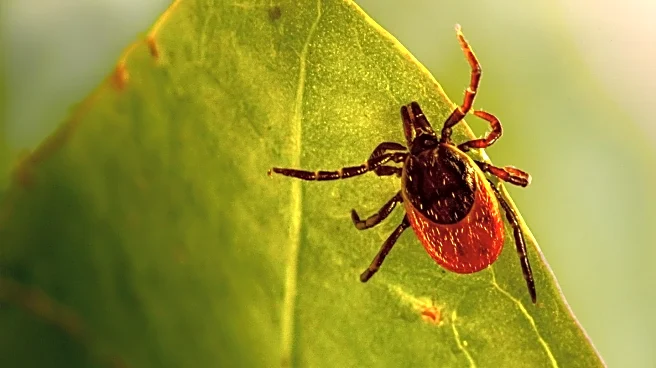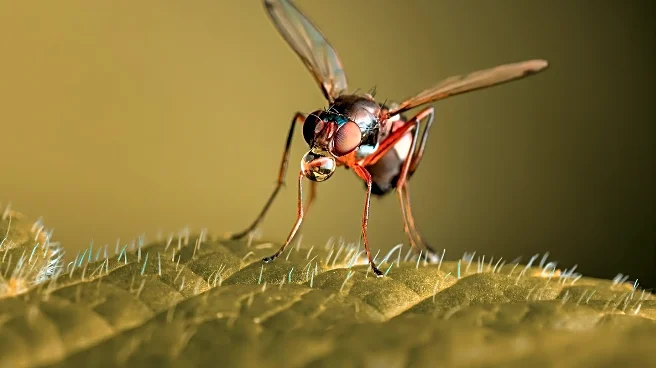What is the story about?
What's Happening?
Ontario County is experiencing a significant increase in Lyme disease cases, attributed to ticks carried by deer. The number of reported cases has surged from 33 in 2021 to 294 in 2025. Canandaigua City Councilmember Doug Merrill is spearheading efforts to address this health issue, alongside concerns about deer-related motor vehicle collisions. A local study aims to educate residents on the health risks posed by deer-borne ticks and explore strategies to manage the deer population. The Ontario County Public Health Director, Kate Ott, highlights the prevalence of Lyme disease and other tick-borne illnesses, such as anaplasmosis, which is particularly dangerous for older adults and immune-compromised individuals.
Why It's Important?
The rise in Lyme disease cases poses a significant public health challenge, particularly for older adults who are more susceptible due to increased outdoor activities and diminished visual acuity. The disease can have long-term health consequences, affecting quality of life. Additionally, deer-related vehicle collisions result in property damage and potential fatalities, emphasizing the need for effective management strategies. Addressing these issues is crucial for safeguarding public health and reducing economic impacts associated with healthcare costs and vehicle repairs.
What's Next?
A presentation on strategies to address these concerns is scheduled for September 8 at the Canandaigua City Council’s environmental committee meeting. The initial phase focuses on education and awareness, with potential countywide efforts to manage the deer population being considered. Data on crashes, illnesses, and other factors will inform future actions. Stakeholders, including local government and health officials, are expected to collaborate on implementing effective solutions.
Beyond the Headlines
The increase in tick-borne diseases highlights broader environmental and ecological challenges, such as the impact of deer on local ecosystems and the spread of invasive plant species. Effective management of the deer population could have positive implications for biodiversity and forest health. Additionally, the situation underscores the importance of public health education in preventing disease transmission.
AI Generated Content
Do you find this article useful?














